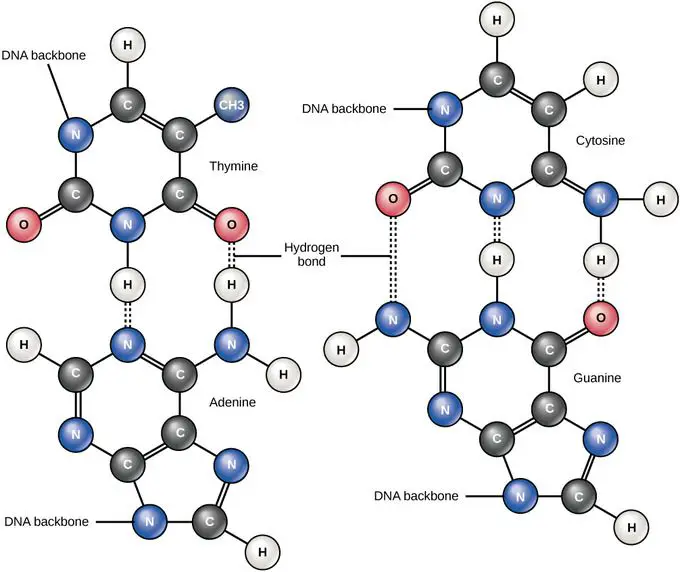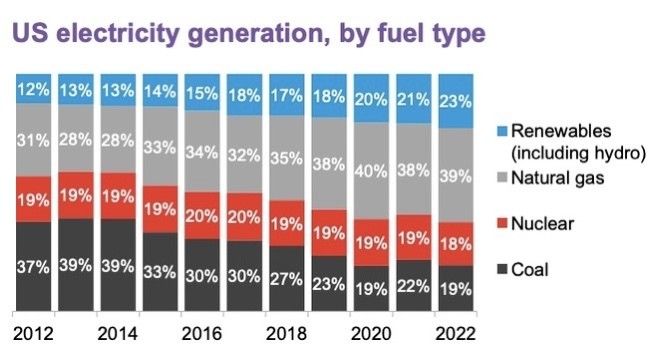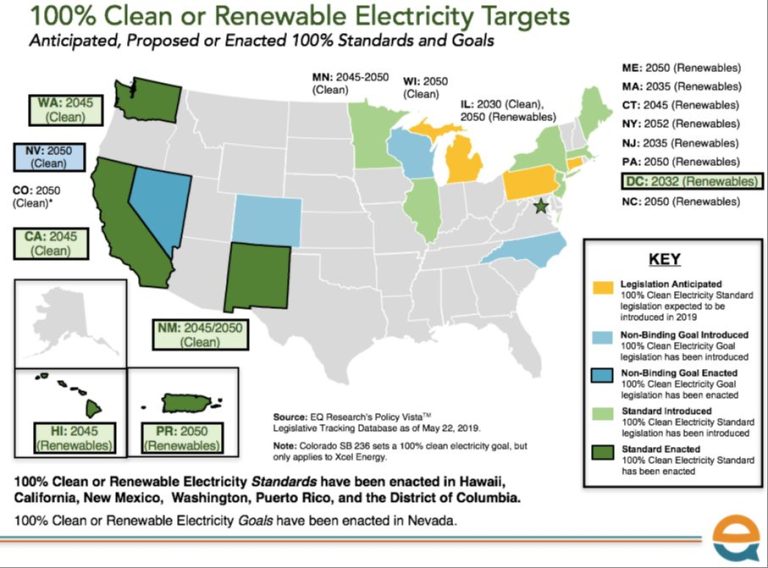Where Does The Earth’S Electricity Come From?
Electricity is a form of energy resulting from the motion of charged particles like electrons and protons. It is a critical part of modern civilization, powering homes, businesses, transportation, communication networks, and industrial processes. Without electricity, the technological advancements and conveniences of the modern world would not be possible.
On Earth, electricity is generated from a variety of sources that are used to rotate turbines connected to electrical generators. The rotational mechanical energy is converted into electrical energy that powers our world. In this article, we will examine the major sources of electricity generation on Earth and provide an overview of how each source works to produce electricity.
Fossil Fuels
Fossil fuels like coal, natural gas and petroleum provide a large share of the world’s electricity. These energy sources are burned to heat water, which creates steam that spins turbines to generate electricity. Fossil fuels are non-renewable resources formed from the buried remains of plants and animals from millions of years ago.
Coal is a combustible black or brownish rock that is mined from underground seams. When coal is burned, it produces emissions including carbon dioxide, sulfur dioxide and nitrogen oxides. Natural gas is a fossil fuel found deep beneath the earth’s surface that’s used to fire many power plants. The burning of natural gas produces greenhouse gases like carbon dioxide and methane.
Petroleum refers to liquid fossil fuels like oil that come from underground reservoirs. Petroleum can be refined into fuels like gasoline, diesel and jet fuel. Some power plants burn petroleum or oil to produce electricity. A downside is that burning oil generates air pollutants.
While fossil fuels have powered society for generations, they have major environmental drawbacks. Burning fossil fuels produces greenhouse gases that contribute to climate change. Coal plants emit toxins linked to acid rain, smog and health issues. As renewable energy use grows, dependence on fossil fuels for electricity is expected to decline over time.
Nuclear
Nuclear power plants use nuclear fission to generate electricity. This process involves splitting uranium atoms in a controlled chain reaction to produce heat that is used to create steam and spin turbines. Uranium is a non-renewable resource mined from the earth.
Nuclear fission occurs inside the reactor of a nuclear power plant. Uranium fuel rods are submerged in water, which acts as a coolant. When uranium atoms split apart, they release neutrons that cause other uranium atoms to split in a continuous chain reaction. This reaction heats the water, producing steam to turn the turbines. On average, nuclear fission converts 30-40% of the total heat energy into electricity.
Nuclear power accounts for about 10% of the world’s electricity. The United States has over 90 nuclear reactors, generating around 20% of the nation’s power. Nuclear plants can reliably produce large amounts of electricity without generating air pollution or carbon emissions.
However, nuclear power also presents safety and environmental concerns. Nuclear accidents at sites like Chernobyl and Fukushima have caused catastrophic damage. Radioactive waste produced during fission must be carefully contained for thousands of years while its radiation dissipates. This nuclear waste storage poses challenges. Additionally, uranium mining operations have detrimental impacts on local land and communities.
The future of nuclear power involves addressing these drawbacks through new technologies like small modular reactors and improved waste disposal methods. With innovative safety mechanisms and generation techniques, nuclear proponents believe atomic energy can provide abundant clean electricity to meet global energy needs.
Hydropower
Hydropower harnesses the energy of flowing water to generate electricity. The most common type of hydropower plant uses a dam on a river to store water in a reservoir. The water released from the reservoir flows through a turbine, spinning it, which in turn activates a generator to produce electricity. The amount of electricity that can be generated depends on how far the water drops and how much water moves through the system.
Other types of hydropower plants utilize tidal movement or waves to move water through turbines. Tidal power plants capture the energy of the rising and falling tides to power turbines. Wave power plants use the up-and-down motion of ocean surface waves to drive generator systems.
Hydropower is considered a renewable energy source because it relies on the water cycle to replenish the water supply. However, it can have environmental impacts, especially large dam projects. Dams disrupt natural water flows and can interfere with fish migration and breeding. Large reservoirs created by dams inundate habitats and disrupt ecosystems. Hydropower projects can also impact local communities if people are displaced by the reservoir.
Wind
Wind power utilizes the kinetic energy of the wind to generate electricity. This is primarily done through the use of wind turbines. There are two types of wind turbines – horizontal axis and vertical axis. Horizontal axis turbines are most common, and have blades that rotate perpendicular to the wind. The wind causes the blades to spin, which then spins a shaft connected to a generator to produce electricity.
Wind turbines can be built on land (onshore) or offshore in coastal waters. Onshore wind is less expensive to build but has limitations on suitable sites. Offshore wind is able to tap into stronger and more consistent winds offshore, but costs more to install and maintain. The height of wind turbines can range from 50 meters onshore to over 200 meters offshore. Larger blades are able to capture more wind energy.
The amount of electricity generated depends on the wind speed. There needs to be a minimum amount of wind speed for the turbines to operate. At very high wind speeds, turbines may have to be shut down to avoid damage. The intermittency of wind means generation can fluctuate greatly in a short period of time. This provides challenges in relying on wind for a steady electricity supply. However, combining wind energy with other power sources over large geographic regions can help address variability.
Solar
Solar power is rapidly growing as a source of electricity around the world. There are two main ways that solar energy is converted into electricity:
Photovoltaics (PV) use solar panels made up of solar cells containing photovoltaic material that converts sunlight directly into electricity. When sunlight hits the solar panels, electrons are knocked loose from the atoms, creating an electric current. PV panels are modular and can be installed on rooftops or grouped together into large solar farms.
Concentrated solar power (CSP) uses mirrors or lenses to focus a large area of sunlight onto a small area. The concentrated heat is converted into electricity via conventional steam turbines or Stirling engines. CSP requires direct solar radiation to operate efficiently and is better suited for large utility-scale projects in sunny locations.
Limitations of solar power include intermittency (only generates power when the sun is shining), large land requirements for utility-scale projects, and relatively high costs compared to conventional sources. However, costs have dropped dramatically in recent years, making solar power competitive in more areas. With advancements in energy storage technology, solar’s intermittency issues can also be reduced.
Geothermal
Geothermal power plants use heat from the earth’s core to produce steam that spins turbines to generate electricity. This heat comes from hot molten rock that is thousands of feet below the earth’s surface. Wells are drilled into underground reservoirs to tap into this steam or hot water that can be brought to the surface to power generators.
Geothermal power plants are located in areas with active or geologically young volcanoes like Iceland, New Zealand, and Indonesia. In the western United States, geothermal plants operate in California, Nevada, Utah and Oregon where there are underground reservoirs of steam or hot water.
The largest geothermal power plant in the world is located in California at The Geysers, where steam from deep underground is piped directly to power generators on the surface. There are many advantages to geothermal power – it provides constant base-load power that is not intermittent like wind and solar power. The steam and hot water used is also replenished naturally over time underground.
Biomass
Biomass refers to plant and animal matter used to generate electricity. Some examples of biomass sources are wood, crops, landfill gas, and municipal solid waste. Biomass is considered a renewable energy source because the plant matter used to generate electricity can be replanted and grown again in a short period of time compared to fossil fuels which take millions of years to form.
Biomass power plants burn the plant matter directly or convert it into a gas to generate electricity. The gases released from burning biomass can be used to power turbines that drive generators. One advantage of biomass power plants is that they can provide baseload power, meaning they can generate electricity consistently around the clock.
However, there are some limitations to biomass power. It is not as efficient or cost-effective as other renewable sources like solar and wind. There are also concerns about the sustainability and environmental impact of large-scale biomass operations. The amount of available biomass fuel is limited by the availability of farmland and crops. Transporting and storing biomass fuels also requires more infrastructure compared to other renewable fuels.
The Future
As the world looks to transition away from fossil fuels, there is much hope and excitement around emerging renewable energy technologies. Some key technologies that may play a bigger role in the future electricity mix include:
Wave Power: Energy from ocean waves can provide continuous and predictable electricity. Wave energy devices capture the energy of waves and convert it into electricity. While still in early stages, wave power has potential for future commercialization.
Tidal Power: Tidal power utilizes the rise and fall of ocean tides to generate electricity through tidal turbines. Tidal power is still developing but offers reliability since tides are predictable.
Hydrogen Power: Using electricity from renewables, hydrogen can be produced through electrolysis. The hydrogen can then be used for electricity generation or transportation fuel. Hydrogen may enable greater adoption of renewables.
Many countries aim for a future electricity mix composed mainly of renewables. The costs of technologies like solar, wind and energy storage continue to fall. While fossil fuels still dominate, it is hoped that innovative clean technologies combined with sound policies can enable a clean, renewable-powered electric grid in the coming decades.
Conclusion
In summary, electricity generation today comes from a variety of sources, both renewable and nonrenewable. Fossil fuels like coal, oil and natural gas make up the largest share at about 60%. While plentiful and affordable, they produce significant greenhouse gas emissions contributing to climate change. Nuclear provides around 10% of electricity. While low-carbon, there are concerns around radioactive waste disposal and safety. Hydropower generates around 16% globally but is limited by geographical constraints. Wind, solar and other renewables like geothermal and biomass make up a small but growing share as costs drop and technology improves. Renewables have great potential but integration challenges around intermittency remain.
Going forward, the key challenges around electricity generation are balancing affordability, reliability and sustainability. With growing energy demand and the imperative to decarbonize, the world needs urgent investments in clean energy sources like renewables, nuclear and carbon capture for fossil fuels. The electricity mix of the future must utilize a diverse combination of sources to ensure both climate goals and energy access for all. The transition will not be easy but is critical to mitigate climate change while supporting global development.
Sustainable electricity generation is one of the defining challenges of the 21st century. Clean, affordable and reliable power underpins nearly every aspect of modern civilization. Successfully transforming the world’s energy systems to prioritize low-carbon sources is therefore both an economic and moral imperative for current and future generations.






